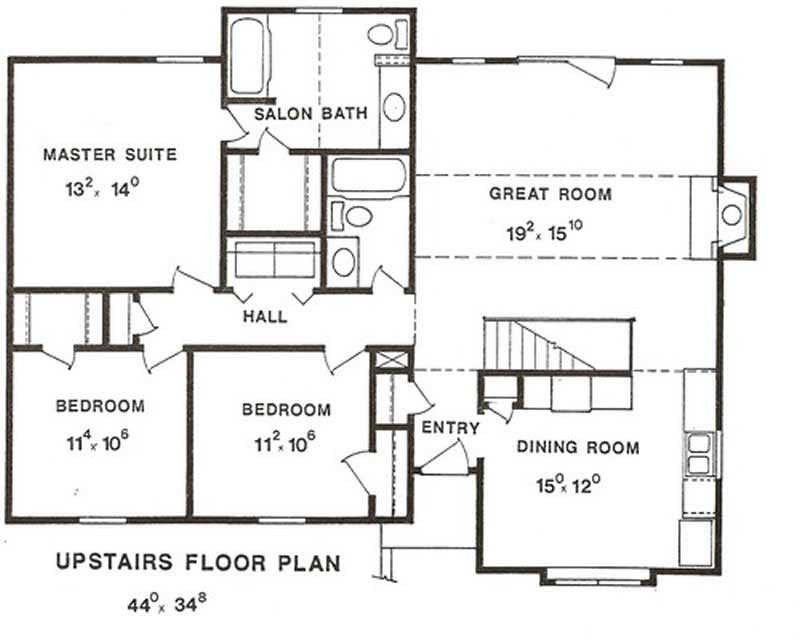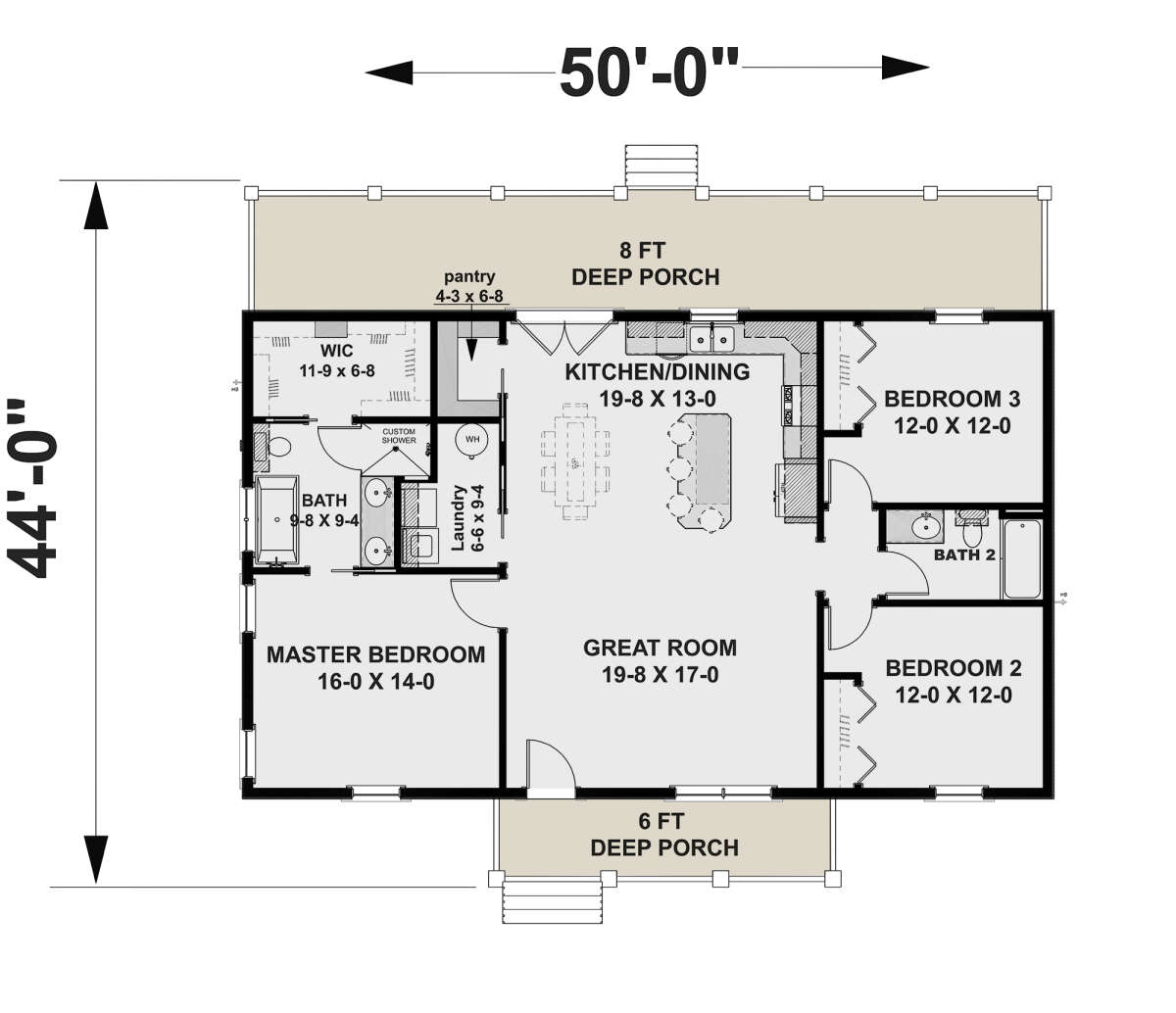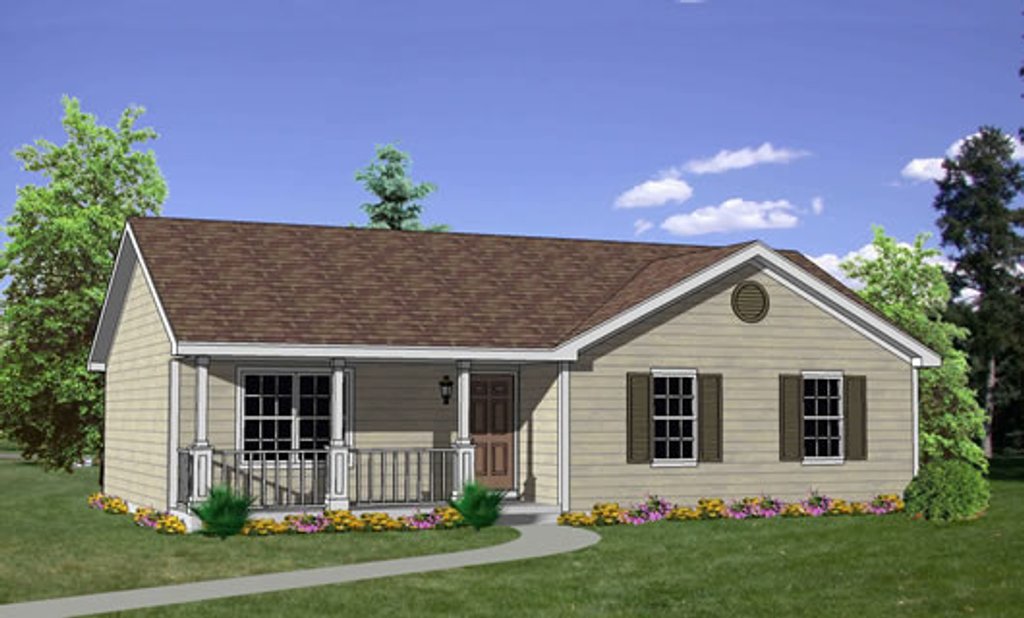Design Considerations for 3 Bedroom Houses Under 1500 sq ft

Living large in a small space can be a real challenge, but it’s totally doable! With some clever planning and design, you can create a home that feels spacious and functional even if it’s under 1500 square feet.
Maximizing Space in a Smaller Footprint
A small footprint doesn’t have to mean a cramped home. The key is to think about how you use space and how to maximize every inch. Open floor plans are super popular for smaller homes because they make the space feel larger. You can also use built-in storage, like a Murphy bed or a closet with a built-in desk, to save space. It’s all about getting creative and thinking outside the box.
Popular and Efficient Layout Designs
There are tons of different layout designs for 3-bedroom homes under 1500 sq ft, but some of the most popular include:
- Open Concept: This is the most common design for smaller homes because it makes the space feel larger and allows for more natural light. The kitchen, dining, and living areas are all connected, which is perfect for entertaining. This layout works best when you have a good flow between the rooms. You don’t want it to feel like you’re walking through one big, empty room.
- L-Shaped: An L-shaped layout is another great option for smaller homes. It allows you to have separate areas for the kitchen, dining, and living room while still creating a sense of openness. This layout is perfect for families who want a little bit of separation between the different areas of the house.
- Split Level: This layout is popular for homes with sloping lots. It allows you to create separate living spaces on different levels, which can be helpful for families with young kids. The bedrooms are usually on the lower level, while the living and dining areas are on the upper level.
Maximizing Natural Light and Ventilation
Smaller homes need to be bright and airy, so natural light and ventilation are key. You can do this by using large windows, skylights, and light-colored paint. Using a light color palette can make a space feel bigger, while darker colors can make it feel smaller. To improve ventilation, consider using fans or installing windows that open.
Choosing the Right Materials and Finishes, 3 bedroom house plans under 1500 sq ft
The right materials and finishes can make a huge difference in how a small home feels. Light-colored materials, like white or beige, can make a space feel bigger and brighter. Using reflective surfaces, like mirrors or glass, can also help to make a space feel more spacious. Avoid using too many heavy materials, like dark wood or stone, as these can make a space feel smaller. It’s all about creating a sense of openness and flow.
Popular 3 Bedroom House Plans Under 1500 sq ft

Yo, building a new crib? Sick! But, like, you gotta stay on budget, right? A 3-bedroom house under 1500 sq ft is totally doable and can still be super stylish. Here’s the lowdown on some popular plans that’ll get you stoked:
Popular 3 Bedroom House Plans Under 1500 sq ft
Okay, so, check out this table. It breaks down some of the hottest 3-bedroom house plans under 1500 sq ft, their features, square footage, and estimated costs. You can totally find plans that fit your style and your wallet!
| Plan Name | Key Features | Square Footage | Estimated Cost |
|—|—|—|—|
| The Ranch | Open floor plan, single story, perfect for families with young kids | 1200 sq ft | $150,000 – $200,000 |
| The Cottage | Cozy and charming, great for smaller families or empty nesters | 1000 sq ft | $120,000 – $160,000 |
| The Craftsman | Traditional style with a modern twist, features a front porch and lots of natural light | 1400 sq ft | $180,000 – $230,000 |
| The Farmhouse | Rustic and cozy, features a large kitchen and open living area | 1300 sq ft | $160,000 – $210,000 |
| The Modern | Sleek and minimalist, features large windows and open spaces | 1100 sq ft | $130,000 – $180,000 |
These are just a few examples, and you can totally find tons of other plans online. Check out these websites:
* Houseplans.com – They have a huge selection of plans, and you can filter by size, style, and features.
* DreamHomeSource.com – They offer a variety of house plans, including some really unique ones.
* PlanCollection.com – They have a wide range of plans, from traditional to modern, and you can get a free estimate for your project.
Comparing House Plan Styles
So, you’re thinking about the style of your future crib. There are tons of options, and it all comes down to your personal vibe. Here’s a quick breakdown of the most popular styles:
* Traditional: Think classic and timeless. These plans often feature symmetrical facades, gabled roofs, and lots of decorative details. They’re all about comfort and coziness.
* Modern: This style is all about clean lines, open spaces, and a focus on functionality. They often feature large windows, flat roofs, and minimalist decor.
* Contemporary: This style is a bit more experimental and often incorporates elements of both traditional and modern styles. It’s all about creating a unique and personalized space.
Pros and Cons of Different House Plans
Yo, every plan has its own perks and drawbacks. You gotta weigh them out before you commit!
* Functionality: Consider how the plan fits your lifestyle. Do you need a big kitchen for cooking? A dedicated office space? A playroom for the kids?
* Energy Efficiency: Think about your impact on the environment. Look for plans with features that promote energy savings, like insulation, efficient windows, and solar panels.
* Aesthetic Appeal: It’s all about your style, dude! Choose a plan that reflects your taste and makes you feel good.
Tips for Building or Remodeling a 3 Bedroom House Under 1500 sq ft: 3 Bedroom House Plans Under 1500 Sq Ft

Building or remodeling a 3-bedroom house under 1500 sq ft can be a fun and rewarding project. But it also involves a lot of planning and careful consideration. It’s essential to make informed decisions throughout the process to ensure a smooth and successful outcome. This section will guide you through the key aspects of building or remodeling your dream home.
Selecting the Right Contractor and Architect
Choosing the right contractor and architect is crucial for a successful project. It’s important to do your research and find professionals who have experience with similar projects and a good track record.
Here are some tips for selecting the right contractor and architect:
- Get recommendations from friends, family, or neighbors who have recently completed similar projects. Word-of-mouth referrals can be invaluable in finding reliable and trustworthy professionals.
- Check online reviews and ratings on websites like Angie’s List, Houzz, or Yelp. These platforms allow you to read reviews from past clients and get a sense of the contractor’s or architect’s reputation.
- Interview multiple contractors and architects to compare their experience, qualifications, and pricing. Ask about their approach to the project, their communication style, and their availability.
- Get a written contract that Artikels the scope of work, the timeline, and the payment schedule. This will help to avoid any misunderstandings or disputes later on.
Obtaining Necessary Permits and Approvals
Before you start any construction or remodeling work, you need to obtain the necessary permits and approvals from your local government. These permits ensure that your project meets local building codes and safety standards.
Here’s a step-by-step guide on how to obtain permits and approvals:
- Contact your local building department to inquire about the specific permits required for your project. They can provide you with the necessary application forms and instructions.
- Submit your application along with the required documentation, such as architectural plans, engineering drawings, and site plans. The building department will review your application and issue a permit if it meets all the requirements.
- Pay the permit fees. The fees vary depending on the type and scope of your project.
- Obtain inspections at different stages of the construction process. The building department will schedule inspections to ensure that the work is being done according to the approved plans and specifications.
Construction Process: From Foundation to Finishing Touches
Building or remodeling a home is a complex process that involves multiple stages. It’s essential to have a clear understanding of the different phases and the tasks involved in each stage.
Here’s a step-by-step guide to the construction process:
- Site preparation: This involves clearing the site, grading the land, and preparing the foundation. This stage also includes installing utilities like water, sewer, and electricity.
- Foundation: This is the base of your home and provides support for the walls and roof. The type of foundation will depend on the soil conditions and the design of your home. Common types of foundations include concrete slabs, crawl spaces, and basements.
- Framing: This involves building the walls, roof, and floors of your home. The framing is typically made of wood or steel and provides the structural support for your home.
- Roofing: The roof protects your home from the elements and provides insulation. The type of roofing will depend on your climate, budget, and aesthetic preferences. Common roofing materials include asphalt shingles, metal roofing, and tile roofing.
- Exterior finishes: This involves applying siding, windows, doors, and other exterior finishes. The type of exterior finishes will depend on your budget, style, and climate.
- Interior finishes: This involves installing drywall, painting, flooring, cabinets, and other interior finishes. This stage is where you can personalize your home with your own style and preferences.
- Final inspections: Once the construction is complete, the building department will conduct final inspections to ensure that the work meets all the requirements. You will receive a certificate of occupancy once the inspections are passed.
Essential Items to Consider During the Building or Remodeling Process
There are many essential items to consider when building or remodeling a home. These items can be categorized into three main groups: appliances, fixtures, and furniture.
Appliances
- Refrigerator: Consider the size, features, and energy efficiency of the refrigerator you need. A larger refrigerator might be necessary for a family, while a smaller one could be sufficient for a single person or a couple.
- Stove/Oven: Choose a stove/oven that meets your cooking needs and preferences. Consider the size, fuel type (gas or electric), and features, such as self-cleaning ovens or convection ovens.
- Dishwasher: A dishwasher can save you time and effort in cleaning dishes. Consider the size, capacity, and noise level of the dishwasher you need.
- Washing machine and dryer: Choose a washing machine and dryer that meet your laundry needs and preferences. Consider the size, capacity, and energy efficiency of the appliances.
- Microwave: A microwave is a convenient appliance for heating food and drinks. Consider the size, power level, and features of the microwave you need.
Fixtures
- Lighting fixtures: Choose lighting fixtures that provide adequate illumination and enhance the aesthetics of your home. Consider the style, size, and functionality of the fixtures.
- Bathroom fixtures: Choose bathroom fixtures that are durable, stylish, and meet your needs. Consider the type of toilet, sink, showerhead, and bathtub you want.
- Kitchen fixtures: Choose kitchen fixtures that are functional and stylish. Consider the type of faucet, sink, and cabinet hardware you want.
- Hardware: Choose door knobs, handles, and other hardware that are durable and complement the style of your home.
Furniture
- Bedroom furniture: Choose bedroom furniture that provides adequate storage and comfort. Consider the size, style, and functionality of the bed, dresser, nightstand, and other furniture pieces.
- Living room furniture: Choose living room furniture that is comfortable and complements the style of your home. Consider the size, style, and functionality of the sofa, chairs, coffee table, and other furniture pieces.
- Dining room furniture: Choose dining room furniture that meets your needs and preferences. Consider the size, style, and functionality of the dining table, chairs, and other furniture pieces.
3 bedroom house plans under 1500 sq ft – Three-bedroom house plans under 1500 sq ft often prioritize space efficiency, making clever use of built-in features and compact design. One challenge in such layouts can be the bathroom door, which may experience wear and tear due to frequent use.
If you find yourself dealing with a pesky hole in your bathroom door caused by a stubborn lock, this guide can help you navigate the repair process. Once you’ve addressed the door issue, you can continue to enjoy the benefits of your well-planned 3-bedroom home.
Efficiently designed 3 bedroom house plans under 1500 sq ft often require strategic space-saving choices. A 30 inch grey bathroom vanity, like those found at this link , offers a balance of functionality and visual appeal, maximizing space without compromising on style.
This approach to bathroom design allows for the creation of a comfortable and aesthetically pleasing space, even within the confines of a smaller footprint, a key consideration in maximizing the utility of a 3 bedroom house plan under 1500 sq ft.